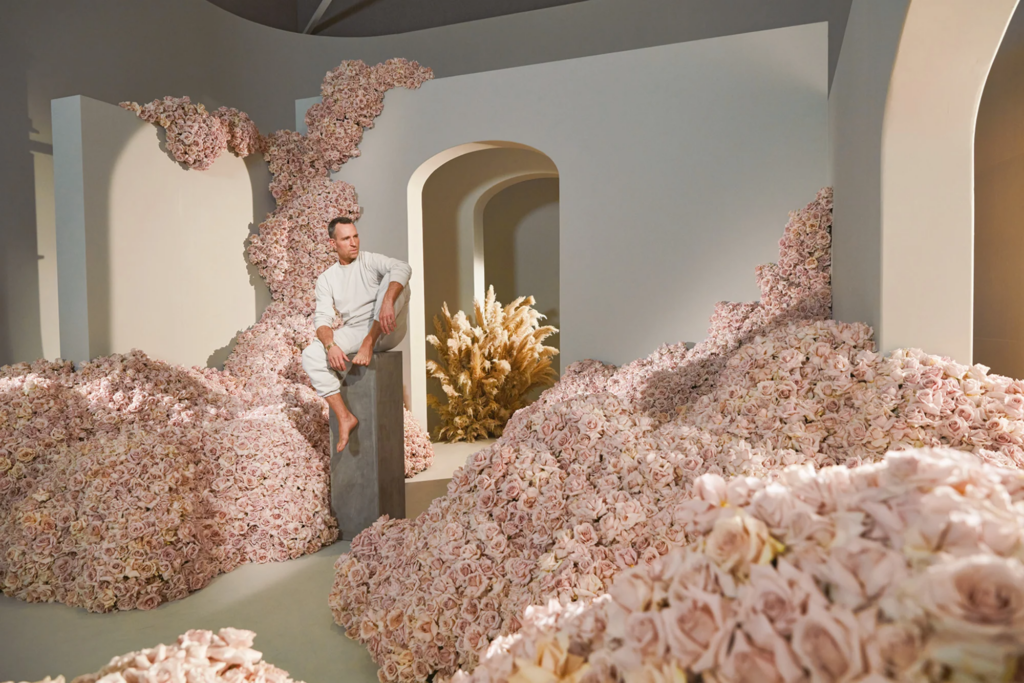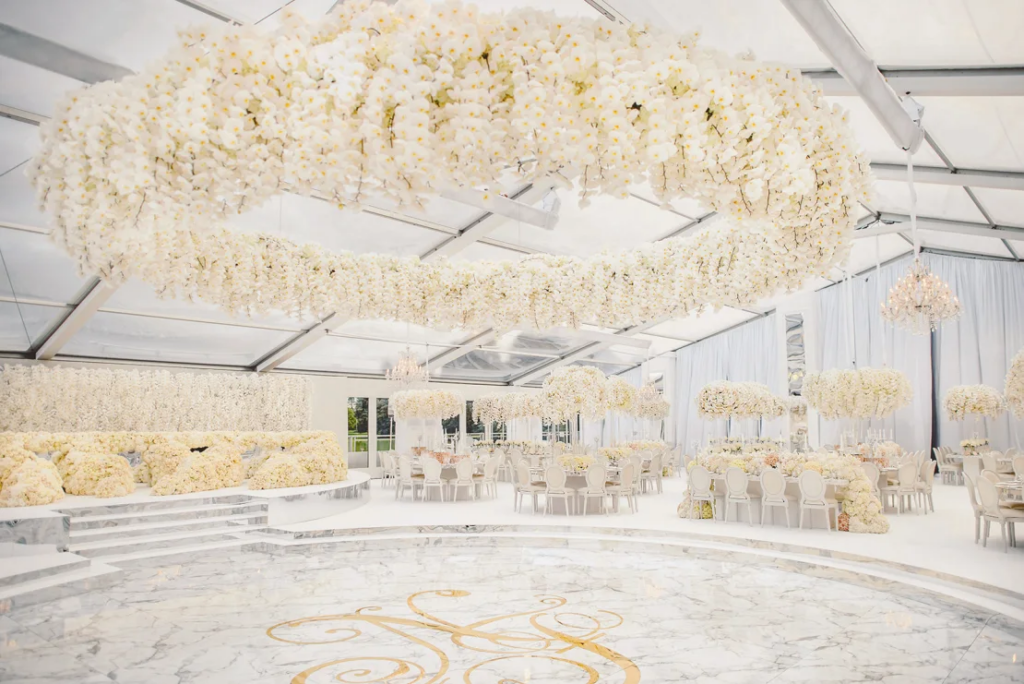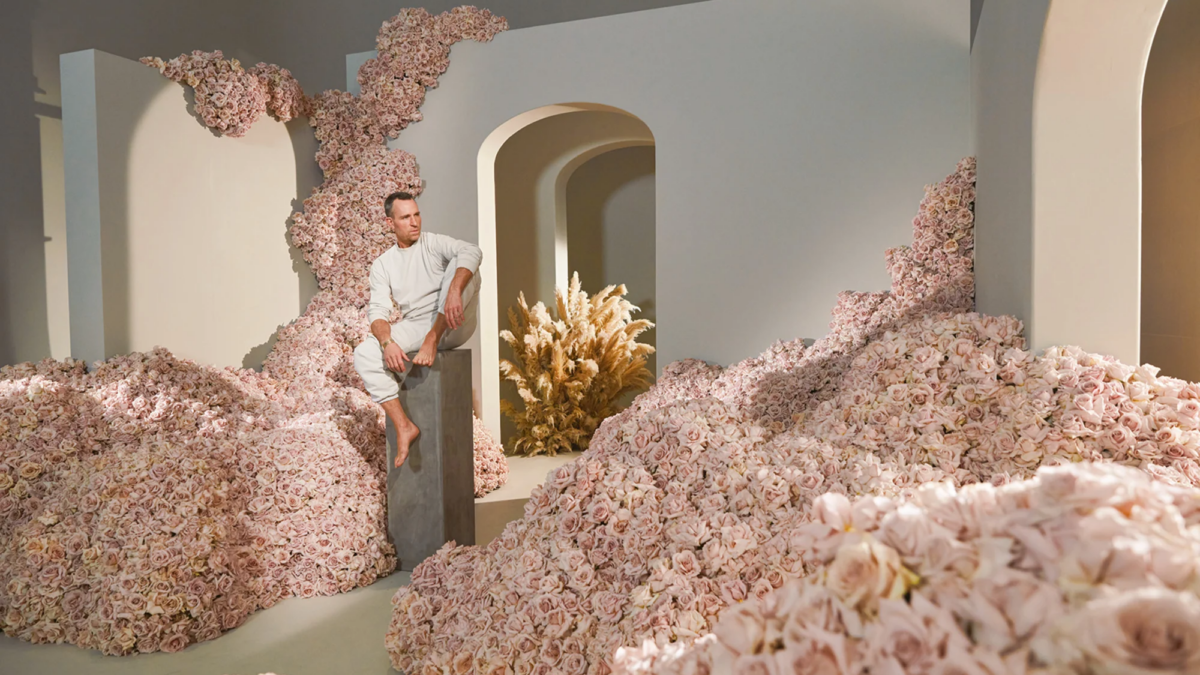
For Jeff Leatham, a floral arrangement isn’t just, well, flowers. It’s an invitation to travel through time.
Over the last three decades, the celebrity florist has worked at the highest levels, transforming the Four Seasons Hotel in Beverly Hills and Paris, among other venues, with breathtaking installations, curating florals for countless over-the-top weddings and celebrity events — in particular, in a longstanding collaboration with the Kardashian-Jenner family — and receiving accolades including France’s Chevalier Legion of Honour, the highest military and civil honor the country can bestow.
In all that time, the florist has witnessed first-hand the power flowers hold to transport the viewer to a pivotal moment in their lives. His job isn’t just about arranging pretty blooms — although he does so with profound skill — but to present a moment of raw, natural beauty that tugs at some core memory. In his latest book, “The Art of the Flower,” Leatham returns to some of those signature, emotive moments. The retrospective also underscores the jaw-dropping scale of so many of his projects: Entire rooms carpeted in red roses, from floor to ceiling; an indoor pool encircled in archway after archway of baby pink orchids; peonies appearing to rain down from the sky.
Leatham’s floral designs don’t just take you into the past, they make a definitive imprint on the present. They are, in as much as the flowers themselves are ephemeral, unforgettable.
What draws you to flowers as a medium for creativity, and creative expression?
Jeff Leatham: For me, it’s the amount of joy that (a floral arrangement) brings to people. With the work that I do in hotel lobbies, the amount of people rushing by who will stop in their tracks to look and take it all in — that, for me, is so important. When someone sees beauty — especially beauty that’s from nature. I think that’s what attracts me. All these years later, it still really takes my breath away how the beauty of nature takes people aback.
Flowers are a staple of so many human milestones. Why do you think they play such an integral role in our lives?
They bring back certain memories, especially with different seasons; they’re like old friends that go away and then come back to visit again. There’s also flowers that bring you back to certain times of your life —my father’s mother passed away when I was very young, but every time I see or smell a lilac, it immediately takes me back to when I was four years old, to when I was (visiting) with her and she had giant lilac bushes in front of her house.
I think a lot of people have stories like that with flowers. (They take) them back to a moment in their life, whether it be happy or sad — like a time capsule.

What about the ephemerality of flowers appeals to you in particular?
I think it’s because in life — and especially in my life — you have those fleeting moments where it’s like, “I could not be more happy than I am right now.” It’s the same when you have one of your favorite flowers. It’s pretty, but it’s only going to be like that for one or two days, so hold onto that moment. Enjoy it while it’s beautiful, because it doesn’t last forever.
How would you describe your perspective on floral design?
I feel super lucky to live in this time when flowers are so extremely popular. When I moved to Paris in 1992 (and started working with the Four Seasons George V Hotel), we revolutionized the way people thought of flowers — showing them in a really clean, simple, chic way. Very monochromatic, all one type, bunched together, coming out of the base and floating. That really started a revolution.
Step inside a ‘floating’ flower garden in Tokyo
Styles have changed over the years; it’s kind of like fashion in that way… everyone just chooses what best suits their personality. Flowers have also become such a statement of wealth — a status symbol, like pulling up in a really nice car at a wedding. How many flowers can you have to prove how much money you have?
You write in the book about your time in Paris, and the fashion icons you were surrounded by. How did those relationships influence your work?
Those days I refer to as “The Golden Years.” You had everyone — from Karl Lagerfeld to Lee McQueen and Tom Ford, Marc Jacobs when he was at Louis Vuitton — at the full height and bloom of their career. That really did shape who I was as an artist, because that was a time when anything goes. There were big budgets and big creativity. It was very in your face. It was very cutting edge.
I remember, especially, going to McQueen shows — (they) were just so out of this world and creative. Pardon my French, but he didn’t give a fuck. He was pushing the boundaries of design; that really did influence me, and still does — because I feel like that does not exist in fashion anymore. Now it’s like, how many bags and sunglasses and shoes can we sell, rather than, say, let’s make a dress out of seashells. Back then, when I was experimenting, I remember using live birds and butterflies and different things in my work just to push my boundaries. Some of it was successful and some of it failed, but that really made me a better artist.
Kim Kardashian wrote the foreword for this book. What makes your relationship with her so special?
Well, my relationship started with her mom, Kris Jenner. She has taught me a lot because she’s always had such amazing taste and such amazing style. Kimberly also has such a love of art and fashion; she always wants to be on that cutting edge, but in a classic way. She’s definitely not safe. She wants to make a statement. I love working with her because she’s always open to doing different things. She’s always sending me photographs, like, “what if we did something like this but made it our own?” I love the way that she pushes me as a designer.
They’re great friends and they’re great clients. We’re very similar in our love of photography and fashion and, especially with Kim, a love of architecture now. Which for me is interesting because a lot of what I do with flowers has to do with architecture.
It seems like your work is very much in communication with the architecture and environment it lives in. How do you navigate that?
Exactly. I think the architectural aspect of my work really started because I had no idea what I was getting myself into with (the George V hotel) when I started there. It’s just so heavy and French and classical; I was like, I have to do something here that’s the total opposite of this so that my work actually gets noticed, and doesn’t just fade away into the tapestries. that’s when I started to work very architecturally, the flowers in bold colors, very strong bold lines. It really made a difference.
And then I won out in the end because all the heavy furniture in the lobby got taken away. Take away the furniture, put in more flowers!


